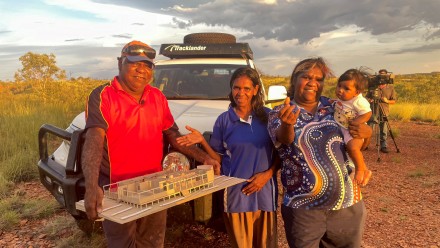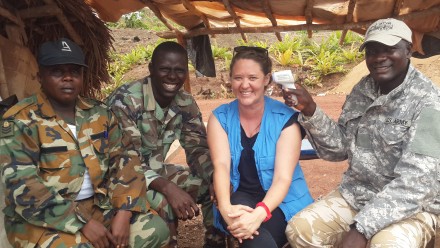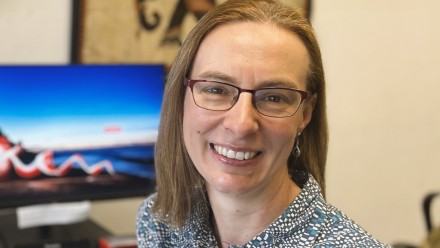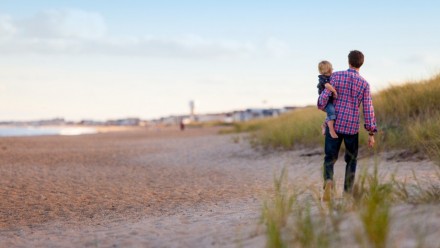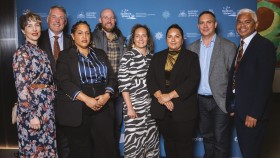Parental leave is an investment, not a cost
Share
Nordic countries have been leading the charge with their progressive and equitable parental leave schemes, viewing them as an investment to their country and citizens. Australia, however, sees paid parental leave as a financial burden, and this needs to change.
In 2009 Australia announced its historic paid parental scheme. The scheme was never intended to be set in stone, rather a policy that would be improved upon over time. Yet ten years later it remains largely unchanged.
On Thursday 22nd August, researchers and policy influencers from around Australia gathered at ANU to explore ways we can improve our parental leave policy. In the room were many of the original architects of the policy, as well as new thinkers from various backgrounds.
“Our current model provides 18 weeks pay at minimum wage to the primary carer, with 2 weeks for fathers and secondary carers,” explains Senior Research Fellow Dr Liana Leach. “It is expected that mothers will be the primary benefactors of the scheme.”
This conservative ideology of a stay-at-home-mum and bread-winner-dad, however, no longer resonates with many Australians. Women have been fighting for equal rights at work, and parental leave needs to reflect this workforce change.
“There is a distinct gender imbalance. Our current system doesn’t encourage fathers to take leave, with just two percent of fathers taking leave as the primary carer,” says Leach. “Saying fathers should take parental leave is still a controversial idea, and it really shouldn’t be.”
Parents also rely on their employers “topping-up” the scheme. While this is useful to many parents, it has become apparent that it is predominantly the larger employers who have the financial capacity to do it. This can marginalise women and men who are self-employed, or those employed by smaller institutions.
If we look at the case of Iceland, we see a distinct difference in their approach to parental leave allocation. Their scheme offers both men and women three months paid leave each at 80% of their previous wage, and universal payments for non-working parents. It also allows an additional three months leave to be taken by either parent.
The Icelandic model was supported by all political parties, unions, employee organisations and the general public. This more generous allowance combined with social acceptability is reflected by in excess of 80% of fathers making use of the scheme. The effect of this more equitable approach to childcare has flowed well beyond the first year of the child’s life. The division of parenting between Icelandic mothers and fathers is more equitable for at least the first four years for those who make use of the scheme, compared to those who do not.
The Icelandic model has a focus on child wellbeing and equal distribution of work-care balance for men and women - in fact the law explicitly aims “… to ensure children’s care from both parents and to enable both women and men to coordinate family life and work outside the home.”
On the other hand, the Australian scheme focuses primarily on women’s workforce participation. Indeed, it is interesting and perplexing that the child and family are not at the center of the policy, when intuitively they should be.
In order to re-shape our paid parental scheme, and advance gender equity outcomes in both work and care, we need both cultural and economic change. We need to increase our financial support for the policy, which unfortunately can be a hard argument to make.
Importantly we also need a scheme where both mothers and fathers are encouraged and supported to take parental leave, and a society that not only accepts an equal division of labour when it comes to child rearing, but expects it.
“Cultural change is happening, but very slowly. Many Australian dads still find themselves the only one at the park or the playgroup,” says Leach. “The importance of fatherhood has been on the agenda a lot more in the last ten years. We need to value fathers’ care and support it with a more equitable paid parental leave scheme.”
* Speakers at the event included Ásdís Aðalbjörg Arnalds, University of Iceland; Prof. Marian Baird AO, Work + Family Policy Roundtable, University of Sydney; Dr Belinda Townsend,
NHMRC Centre for Research Excellence in the Social Determinants of Health Equity, Menzies Centre for Health Governance, School of Regulation and Global Governance, ANU; and Dr Liana Leach, Research School of Population Health, ANU.
** The event was supported by The Australian National University (NHMRC Centre for Research Excellence in the Social Determinants of Health Equity at the Menzies Centre for Health Governance, PHXchange at Research School of Population Health and Gender Institute) and Families Australia, in collaboration with scholars from the Work + Family Policy Roundtable.





